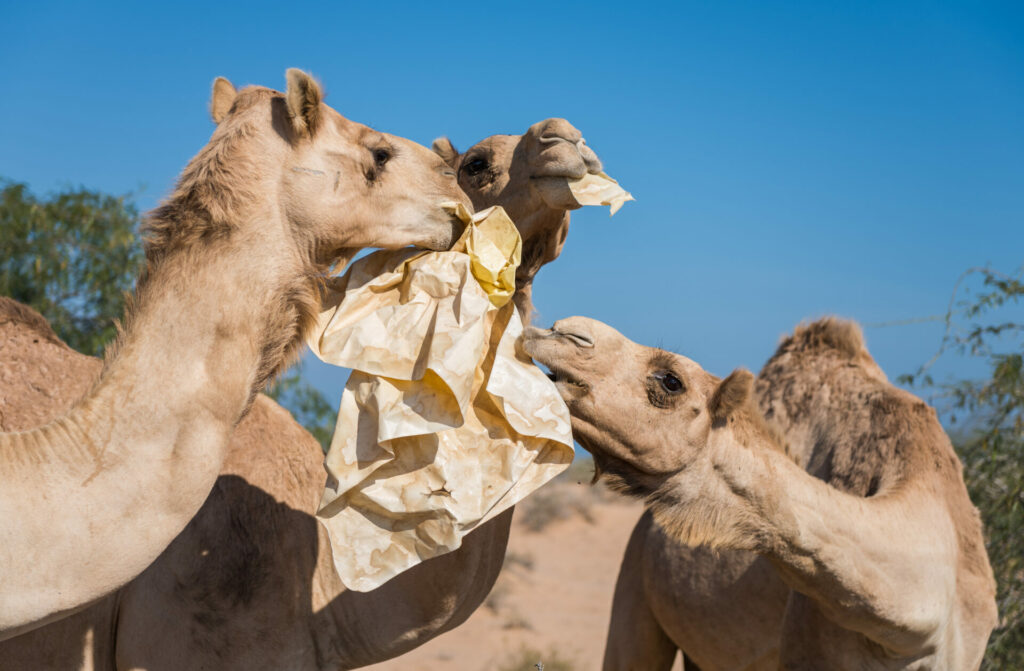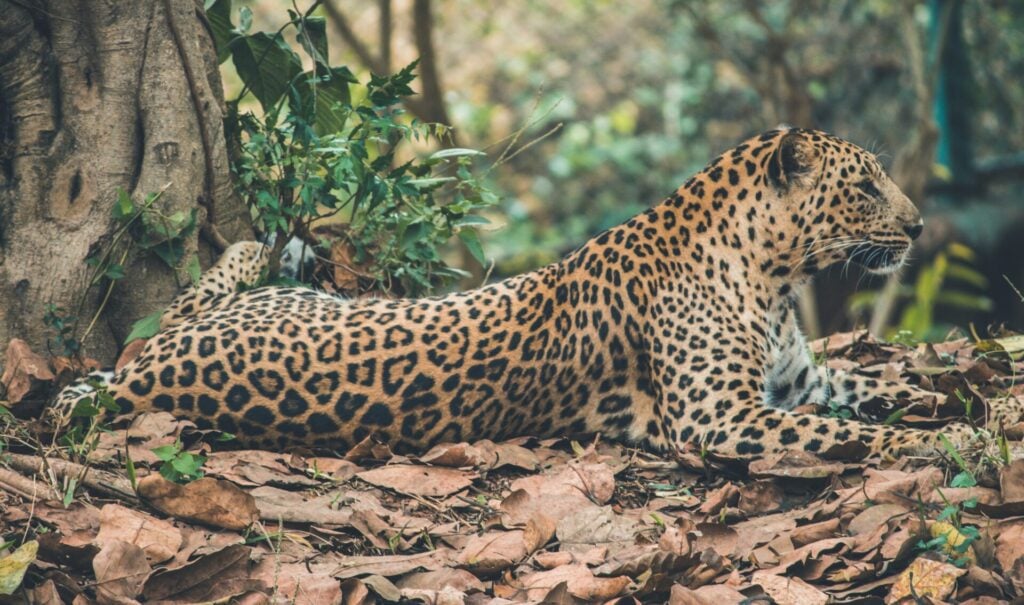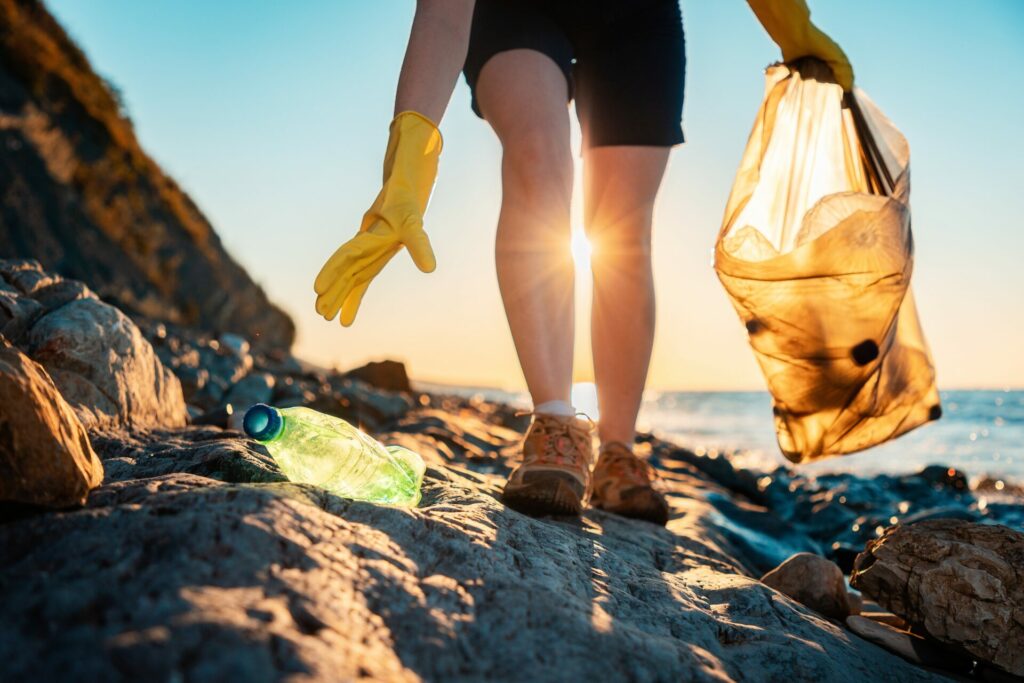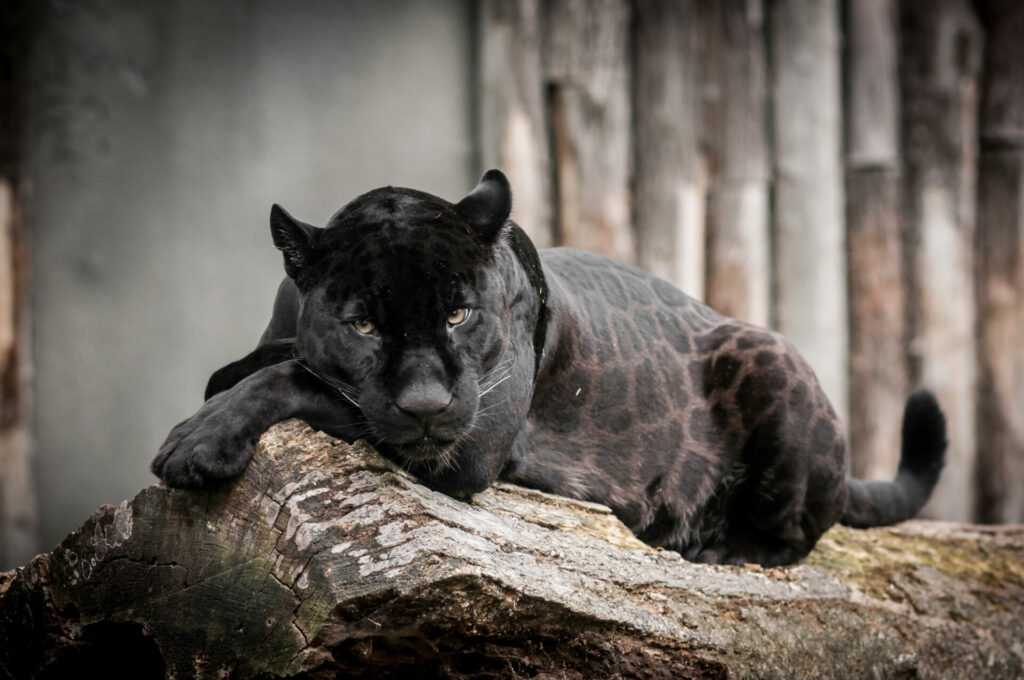It was the peculiar movements of the sea turtle that Sheikh Fahim Al Qasimi noticed first while out on a free diving trip off the island marine reserve of Sir Bu Nuair, a protected area 100km west of Dubai. The green turtle, who was seven metres underwater, seemed to be struggling to reach the surface, sending alarm bells ringing that she may, in fact, be drowning.
As a marine enthusiast, Sheikh Fahim was no stranger to the fact that sea turtles require oxygen. These ancient reptiles do not have gills, and therefore cannot extract oxygen directly from the water however, depending on the species, sea turtles can hold their breath from anywhere between 45 minutes to seven hours.
Equipped with this knowledge, Sheikh Fahim decided to investigate, taking a big breath before plunging down to help the visibly distressed sea turtle. It was at two metres from the surface, as he attempted to hoist her 18kg weight up for air, that he felt the tug of the discarded fishing line wrapped around her neck and flipper securing her to the seabed.
‘I don’t know how long she had been under there for, but it was long enough for the fishing wire to wrap around her flipper about 40 times. It had cut through all the way to the bone’
Sheikh Fahim Al Qasimi, Ambassador Dubai Turtle Rehabilitation Project
‘I grabbed a knife, cut her free and got to the surface, for both of us to have a really big breath,’ the Sharjah Royal tells The Ethicalist. ‘I don’t know how long she had been under there for, but it was long enough for the fishing wire to wrap around her flipper about 40 times. It had cut through all the way to the bone. I spent about 20-30 minutes cutting away that fishing line.’
The Turtle Sheikh
Known affectionately in the UAE as the Turtle Sheikh for his endeavours to save the UAE’s endangered species, Sheikh Fahim’s astute intervention secured the survival of Farah, a name he fondly bestowed on the rescued turtle. While the extensive wounds meant her right flipper required amputation, the 20-year-old sea turtle was nonetheless rehabilitated at the Dubai Turtle Rehabilitation Project (DTRP) based out of the Burj al Arab and Jumeirah Naseem Hotels.
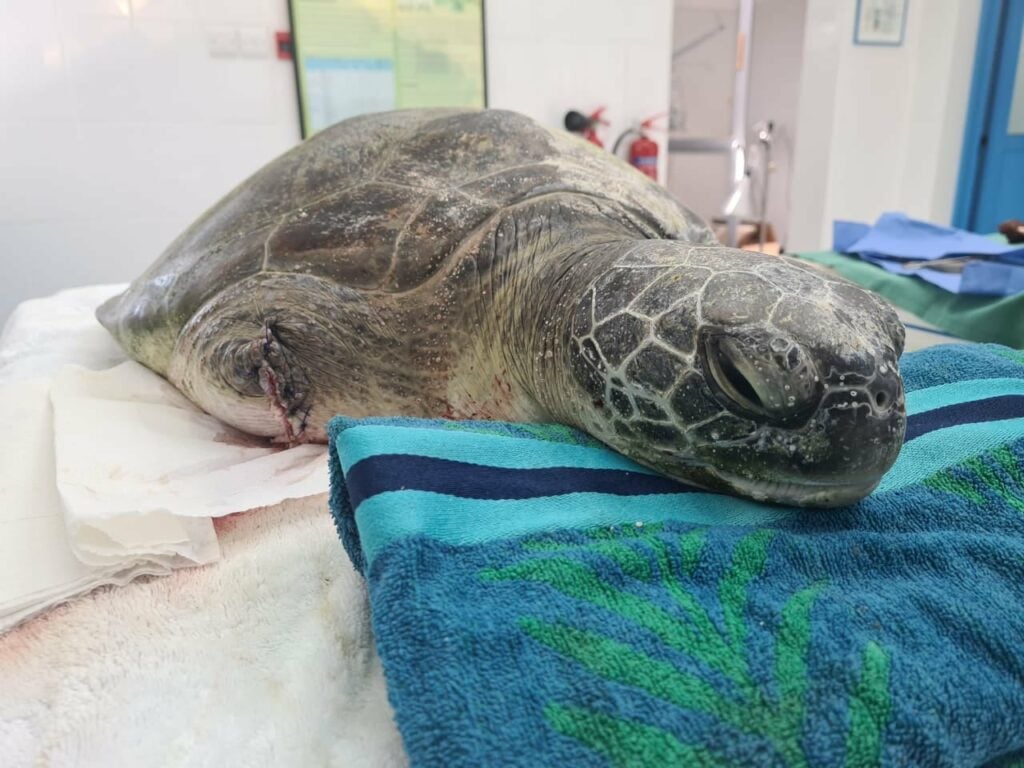
Farah was one of the lucky ones. Under the care of a world class team of vets, the amputee reptile was taught to dive, feed and swim again before being released back into the Arabian Sea seven months later.
‘I’ve seen turtle conservation around the world,’ says Sheikh Fahim who has since become a DTRP Ambassador and fervent turtle conservationist, ‘and the lagoons at Jumeirah Al Naseem, where the sea turtles recuperate, are the best facilities in the world.
‘The water is brought in directly from the sea and it’s filled with jellyfish and angelfish that come and swim in there so it is literally an extension of the ocean; it’s as close as the turtles can get to their natural habitat before we release them.’
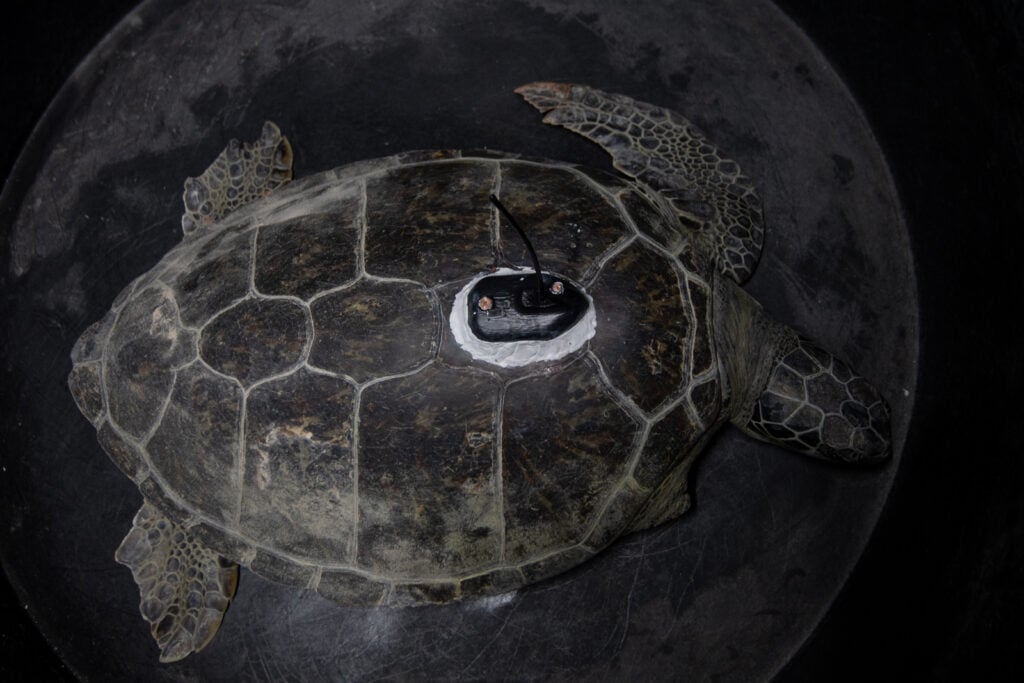
Local Waters
The Arabian Gulf sustains a range of marine ecosystems that provide an annual habitat for endangered green, loggerhead and leatherback turtles and also welcomes hawksbills and olive ridley sea turtles, both classified as critically endangered by the International Union for Conservation of Nature’s Red List.
‘The key message is that these turtles are coming from all over the world into the Gulf, so we have to be good stewards of those waters’
Sheikh Fahim Al Qasimi, Ambassador Dubai Turtle Rehabilitation Project
‘We released an olive ridley with a tracker back in April,’ says Sheikh Fahim. ‘It went straight through the Strait of Hormuz, but then hopped across to the Iranian side of the coast. We even once had a turtle that swam from here to Thailand!
‘The key message is that these turtles are coming from all over the world into the Gulf, so we have to be good stewards of those waters.’
Of the seven species of sea turtles found in the world’s oceans, five can be found in the UAE’s warm, shallow waters.
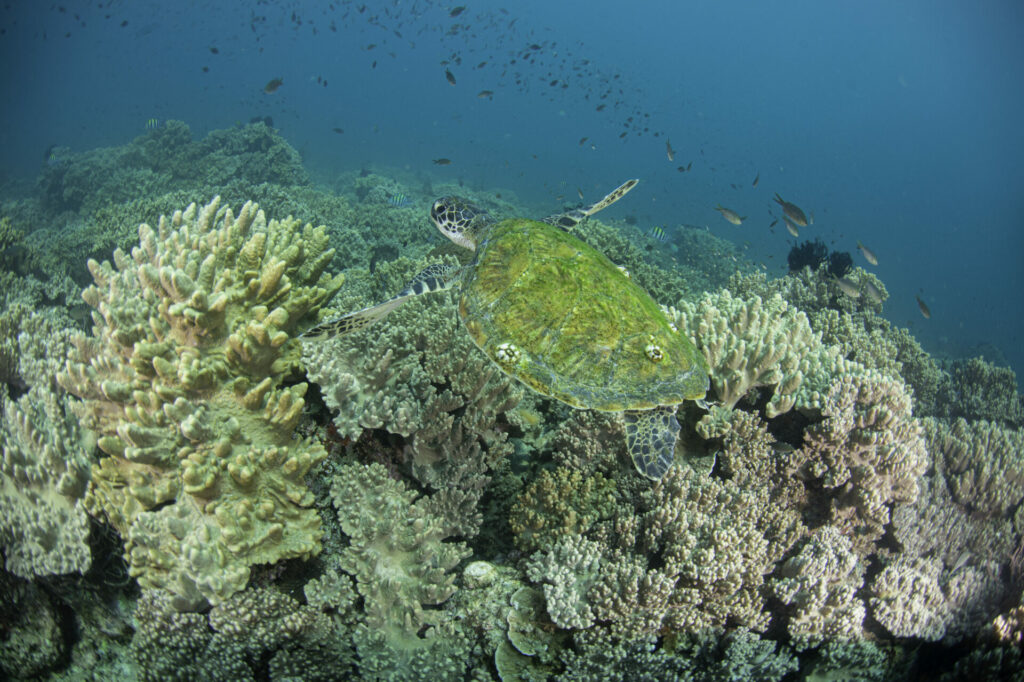
‘The most common species of turtle found in the UAE, the green turtle, is considered endangered,’ explains Emirates Nature WWF marine biologist, Arabella Willing. ‘The only species that nests in the Arabian Gulf, the Hawksbill turtle, is considered critically endangered and the third species we see mostly on the east coast, the loggerhead turtle is also considered to be critically endangered in this region.’
‘Although there is a lot of work being done to study and protect the marine turtles in the UAE, we are not out of the woods yet and we still need a lot of support for conservation efforts.’
Arabella Willing, Emirates Nature WWF
The hawksbill turtle, that has seen a global decline in numbers of 80 per cent over the last century, has an estimated population of only 8,000 nesting females left worldwide and according to the WWF there are only 5 populations globally with more than 1,000 females nesting annually.
They are known to nest in some of the UAE’s 15 marine protected areas that span more than 12 per cent of the country’s territorial waters including Abu Dhabi at Saadiyat Island and the Marawah Marine Biosphere Reserve and in Dubai at the Jebel Ali Marine Reserve.
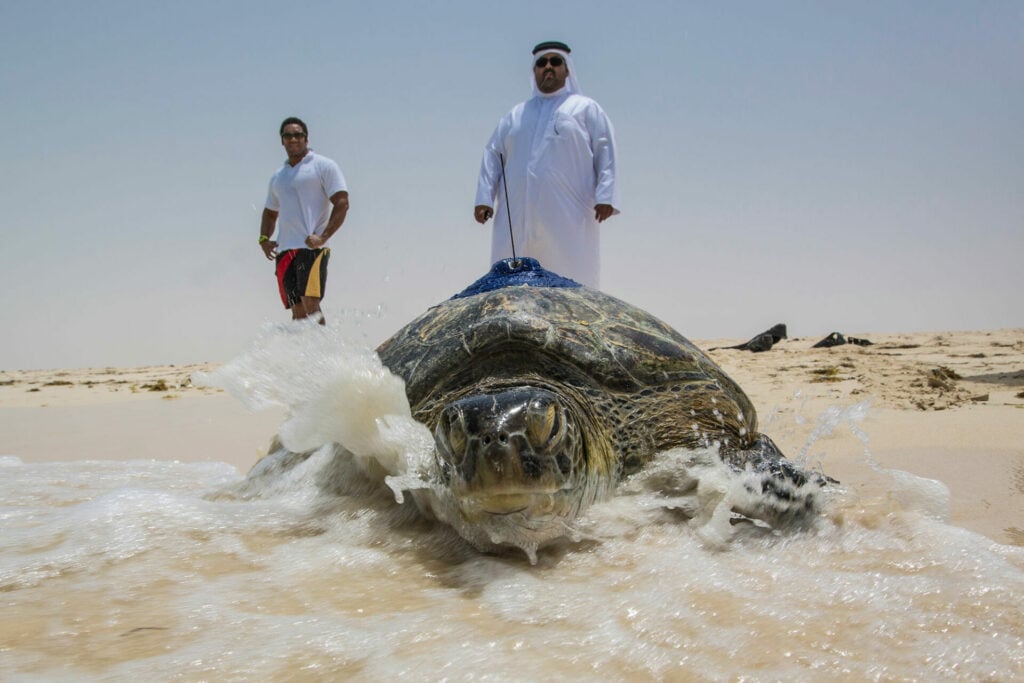
‘Although there is a lot of work being done to study and protect the marine turtles in the UAE,’ explains Arabella, ‘we are not out of the woods yet and we still need a lot of support for conservation efforts.’
Turtle Threats
Protected areas are crucial to ensure the survival of turtles which have roamed our seas and beaches since the time of the dinosaurs, nearly 100 million years ago. Their marine ecosystem is under serious threat from human-related activities that includes abandoned fishing nets, marine debris, plastic pollution, over-exploitation for meat, eggs and shells, vessel strikes from fishermen and recreational boat owners, and the destruction of turtle habitats from coastal developments and rising sea temperature due to climate change.
‘Unfortunately, turtles face a lot of threats,’ Arabella explains. ‘Development along the coast means that nesting beaches and foraging reefs and seagrass meadows are being lost to construction. Similarly, noise and light pollution of beach-front activity disturbs their nesting. Pollution in the water, including plastic and discarded fishing gear are also serious threats.’
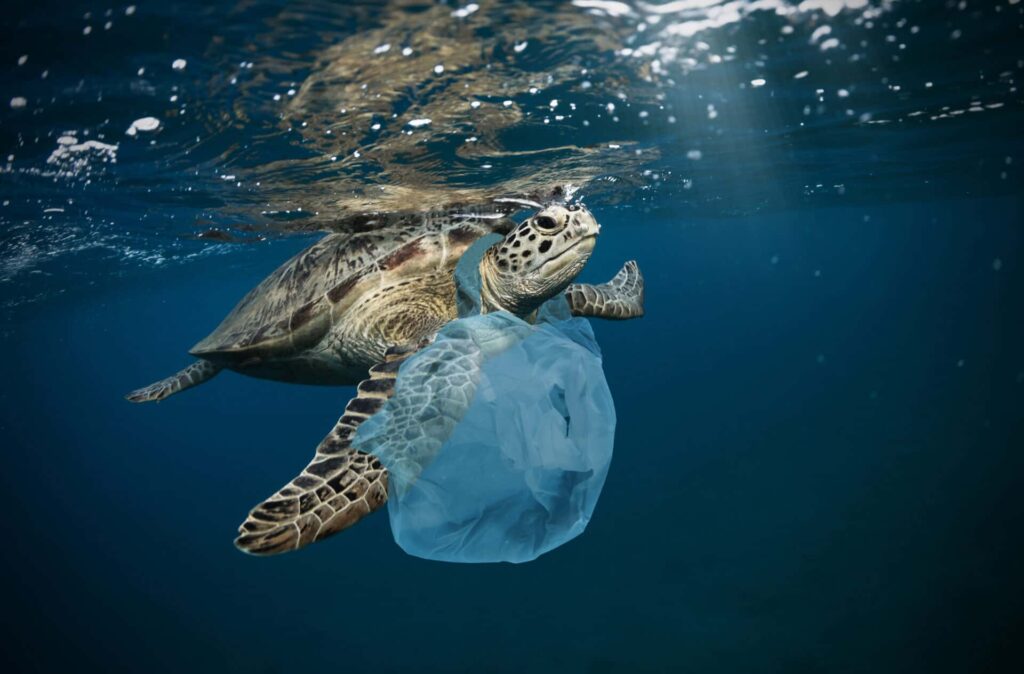
Entanglement caused by nets, discarded fishing lines, and plastic bags pose catastrophic threats to the turtles’ continued survival. Research by the University of Exeter, in England, which examined the way plastics affect mortality rates for sea turtles internationally, found that 91 per cent of turtles entangled in discarded fishing gear die while it’s reported that fishing nets kill a million turtles globally a year.
Approximately 52 per cent of all turtles globally have ingested plastic, a frightening statistic when you consider that a turtle has a 22 per cent chance of dying if it eats just one piece
WWF Australia
Currently, it is estimated that there are between 75 to 199 million tons of plastic in oceans around the world, tragic news for all marine life, especially turtles that are particularly susceptible to the effects of consuming marine debris due to their structure. They have downward facing spines in their throats which should allow them to swallow jellyfish easily, but also prevents the possibility of regurgitation when they swallow plastic bags.
According to one study conducted by the WWF in Australia, 52 per cent of all turtles globally have ingested plastic, a frightening statistic when you consider that a turtle has a 22 per cent chance of dying if it eats just one piece.
‘Plastic bags look like jellyfish and turtles love jellyfish, so they will try to eat them,’ explains Sheikh Fahim. ‘I have seen the insides of turtles, unfortunately post-mortem, and I can assure you it’s horrific when you see what they eat. Their stomachs become compacted; the plastic is like cement.’
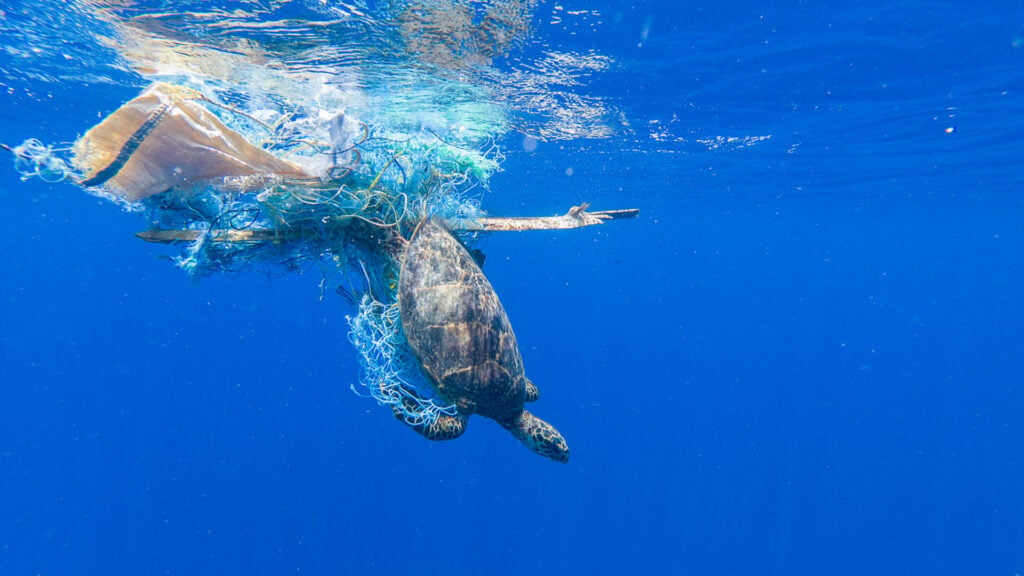
Cold Stunning
But there is one threat that, for once, is not linked to human activity.
In this region a major threat to turtles is cold stunning whereby they become weak and inactive from exposure to cold temperatures. Turtles are cold-blooded creatures and gain their body heat from their surrounding environment. Young turtles of all species are particularly affected by colder sea temperatures during the winter months which makes them sluggish. This enables barnacles and oysters to attach to their shells, weighing the turtle down and preventing them from diving or swimming. It also means they are too cold to eat, drink or swim so winds and currents carry them to shore.
‘People think it’s a good idea to take a knife and remove the barnacles themselves. They don’t understand that turtles feel pain, that it causes bleeding, it causes infections’
Sheikh Fahim Al Qasimi, Ambassador Dubai Turtle Rehabilitation Project
A total of 200 stranded and cold-stunned sea turtles were rescued from Abu Dhabi waters at the start of this year by the emirate’s environmental sector regulator, the Environment Agency Abu Dhabi (EAD), in collaboration with The National Aquarium (TNA).
‘The majority of turtles that we get at the centre are cold-stunned turtles,’ explains Sheikh Fahim ‘You’ll see them floating around or washing up on a beach and the main thing we tell people, when they find a cold-stunned turtle is not to try to remove the barnacles themselves because the process requires marine expertise.’
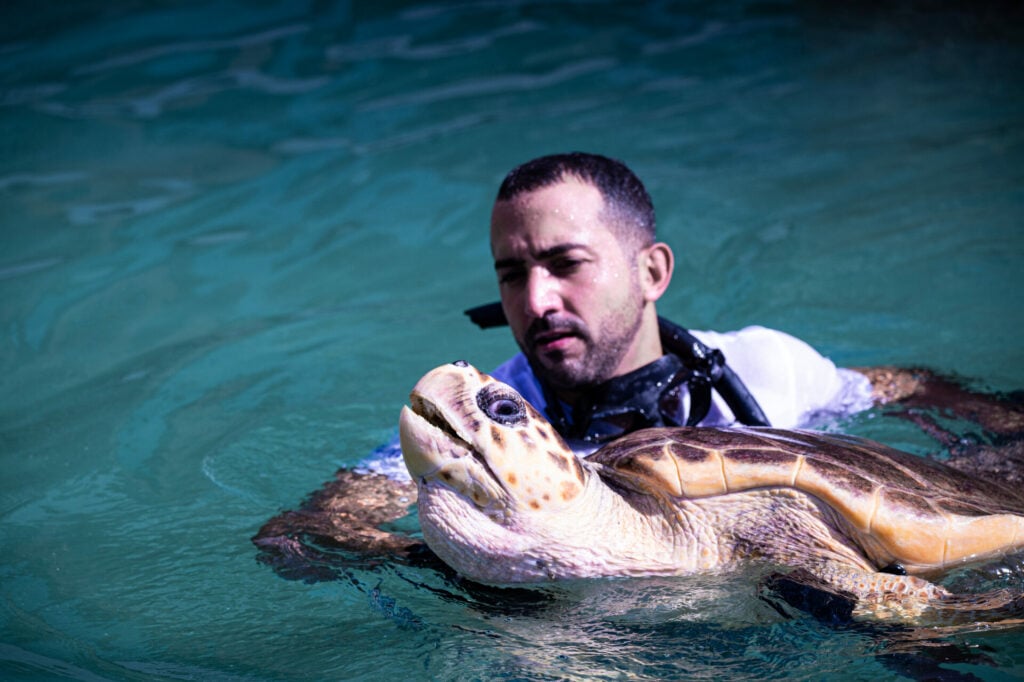
While the efforts of those trying to help distressed turtles is appreciated, Sheikh Fahim warns against heroics.
‘People think it’s a good idea to take a knife and remove the barnacles themselves. They don’t understand that turtles feel pain, that it causes bleeding, it causes infections. And then they put the turtle back in the water, but they don’t know that it’s cold-stunned, which means the turtle is still going to wash up on a beach in the next 24 hours.’
What they actually need is expert care, that will see vets place them in monitored freshwater for a period long enough for the barnacles to fall off, before relocating them to the lagoons at DTRP, where they are well fed, and given time to energise before being releasing back out into the ocean again once the water has warmed up.
According to the EAD, about 300 turtles are found stranded on the emirate’s shores every year because they have become cold-stunned during the cooler months. The numbers are similar in Dubai.
For the general public, Sheikh Fahim explains they should wrap up the turtle in a wet towel and call for experienced help. While no efficient and memorable number previously existed, he ensured it was created and early this year 800 Turtle (800 887853) was born.
800 Turtle
‘800TURTLE directly links you to the Dubai Turtle Rehabilitation Project,’ he explains. ‘It’s been launched across the country so that anybody that finds a turtle now can pick up the phone, call 800TURTLE, and it’ll link to the experts who will figure out a way to make sure the turtle gets rescued.’
Dubai Turtle Rehabilitation Project (DTRP), which was established in 2004 and is run in conjunction with Dubai’s Wildlife Protection Office, offers essential veterinary support provided by the Dubai Falcon Hospital and the Central Veterinary Research Laboratory. The project has returned more than 2,000 turtles to the sea from all over the UAE.
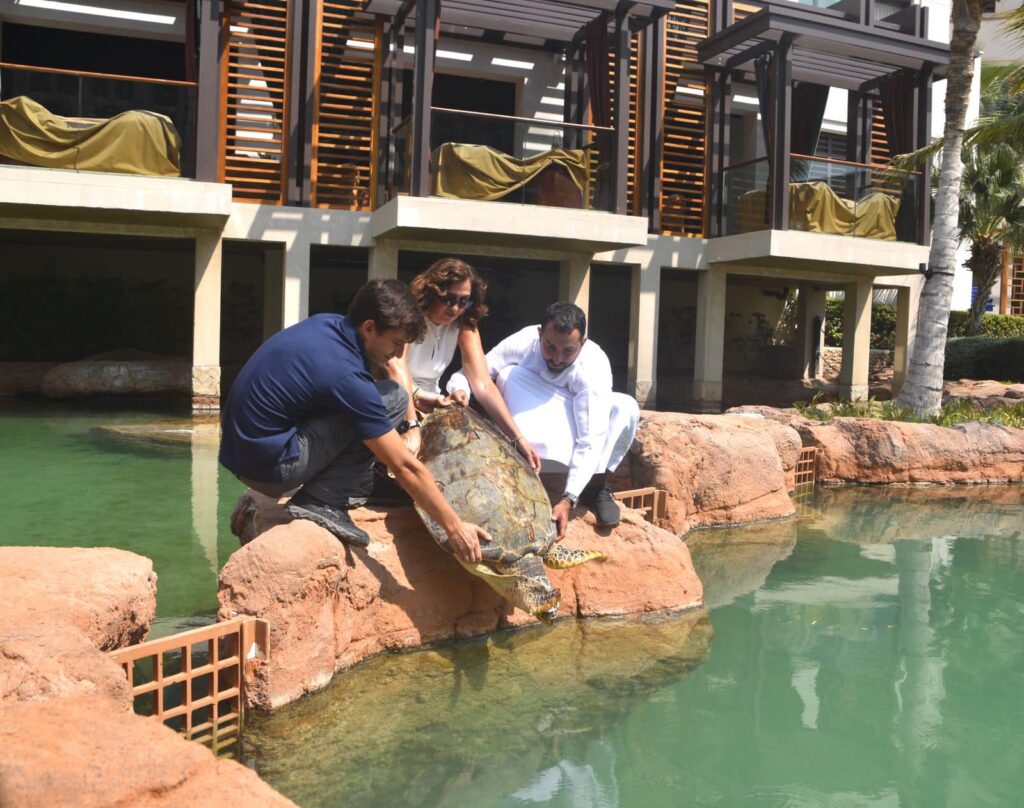
And with 800TURTLE their reach has been extended. Since the launch of the memorable direct line 56 turtles that were found washed up in the UAE have been rescued.
If Farah could communicate, we are sure she would be proud of the legacy her survival has spurred in the actions of Sheikh Fahim al Qassimi.
For his part, Sheikh Fahim is openly emotional about the life-changing rescue.
‘We got the chance to release her, and, honestly, I cried my eyes out for an hour or two,’ he admits. ‘We put a tracker on her to ensure she was coping OK out there, and I still check in on her, every day. She’s found a safe haven in a marine conservation area near Abu Dhabi, and she’s thriving. It’s amazing.’
For more articles on conservation visit our CHANGE section









